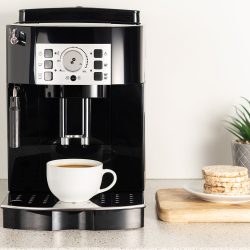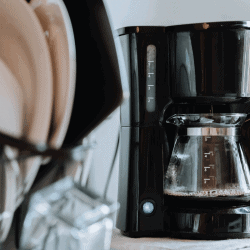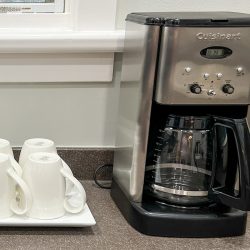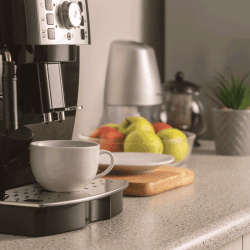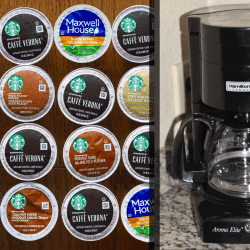Many of us rely on that caffeine surge to jump-start our workday. But when the coffee maker isn't working properly, this can put a real damper on your day from its start. If you have a coffee maker that isn't pumping water, we can help you fix the problem. We researched these appliances in depth so that you'll know for sure what steps to take.
If your coffee maker is not pumping water, it is likely due to a clog in the water valve or a faulty water valve. To remedy the issue, do the following:
- Empty the coffee maker
- Fill the water chamber with white vinegar
- Start a brew cycle
- Let it sit
- Finish the brew cycle
- Empty, rinse, and brew
Or, if your coffee maker has a descaling cycle, refer to the manufacturer's directions to use it.
Now that we know what is causing the coffee maker to not pump water, we'll look at each step you'll need to take to unclog it. You might also be wondering what the life expectancy of a coffee maker is or how you should clean your coffee maker's water tank. For the answers to these questions and more, read ahead in this post to see what our research has uncovered.
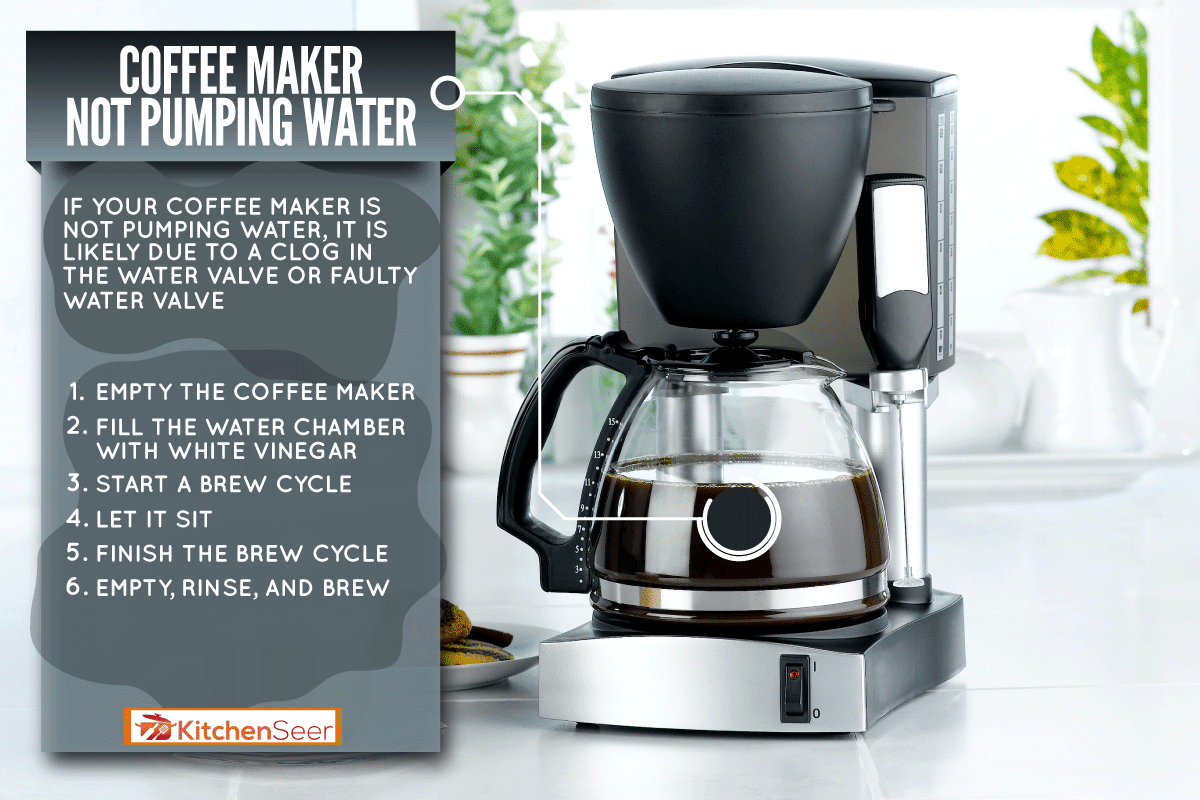
A Step-By-Step Guide To Unclogging Your Coffee Maker
Your coffee maker is a tough little gadget, capable of transmitting the hottest water onto your freshly ground coffee beans. But this little gadget will succumb to something that you might not suspect—the water itself.
Hard water is notorious for building up deposits in all sorts of places. Whether it's in your water heater, shower head, or coffee maker, these deposits can cause a delay in water flow.
Over time, hard-scale deposits can render your gadgets useless, forcing you to either vigorously clean them or replace them altogether.
When it comes to getting your coffee maker cleaned of these deposits, you'll find a fairly quick and easy process. Follow these steps and pointers and you'll be back to get your morning energy in no time.
1. Empty The Coffee Maker
The limescale that has slowly built up in your coffee maker can be removed, but you'll first need to empty your coffee maker. Get rid of all the old coffee grounds. Scrub and rinse the carafe. Give the outside a good once-over with a cleaning cloth.
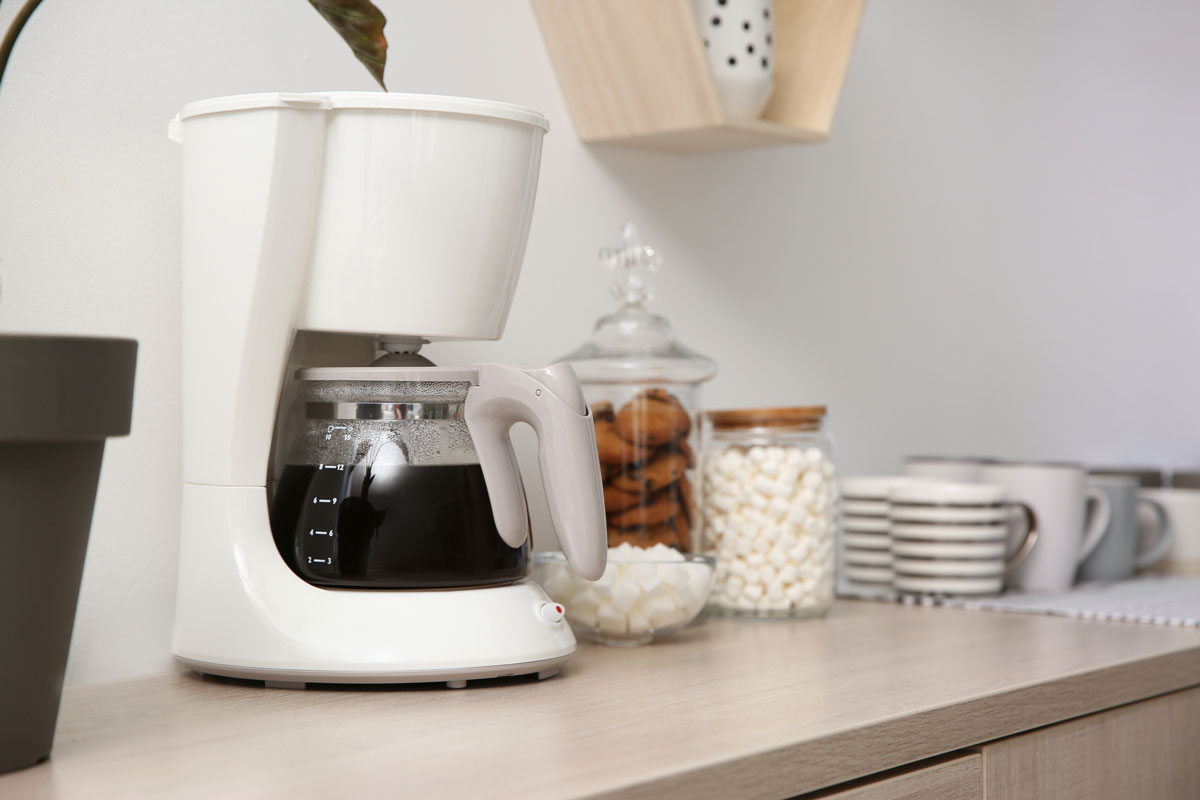
Once the machine is empty and clean, you'll be ready to add your secret cleaning agent—white vinegar.
2. Fill The Water Chamber With White Vinegar
The acidity of white vinegar will cut through the limescale that is clogging your machine. Fill the water chamber halfway with it, then top it off with water.
The white vinegar/water solution will take some time to cut through and dissolve the buildup. To make this happen, you'll need to get this combo cycled through the entire coffee maker.
3. Start A Brew Cycle
Begin a regular brew cycle on your coffee maker. It's important to not let the cycle finish, however. Halfway through the normal cycle, turn the machine off.
4. Let It Sit
While the machine is off, the white vinegar will work its acidic magic. For good measure, let the coffee maker sit for an hour or so.
5. Finish The Brew Cycle
After the proper amount of time has elapsed, turn the coffee maker back on and finish the cycle. By now, the white vinegar will have broken down and dissolved the deposits enough to where they will drip out of the water valve.
6. Empty, Rinse, And Brew
You will now need to thoroughly rinse your coffee maker. You probably don't want your next cup of coffee to smell or taste the vinegar. Once the machine has been emptied of the white vinegar/water solution, fill the water reservoir with water. Run a new cycle, letting the water take away the vinegar odor.
Rinsing it once in this fashion will take care of the problem. Now your coffee pot is ready to make your favorite morning beverage!
Some Coffee Makers Will Have A Descaling Cycle
Some coffee makers have a descaling cycle built into the machine. Consult your owner's manual for more information.
What Is The Life Expectancy Of A Coffee Maker?
With most coffee maker manufacturers, you can expect their products to be under a one-year warranty. But these handy little kitchen appliances will last a great year longer than their warranty might lead you to believe.
On average, a coffee maker will last 10 years. But the brand, frequency of use, and how you treat your appliance can all be factors in its longevity. Take proper care of your coffee maker and clean it regularly, and you'll find yourself with an appliance that should last you a decade or longer without any issues.

How Can I Clean My Coffee Maker's Water Tank?
The water tank on your coffee maker should be routinely cleaned. This will prevent any buildup of mold spores and will keep the water flowing through the machine fresh and clean when it heats up and soaks through the coffee grounds.
Remove the water tank every month and wash it inside and out with hot, soapy water. Use a soft dish sponge to scrub it clean. Rinse it thoroughly and allow it to air dry. As soon as it is dry, you'll be able to reinstall it and be back to making coffee.
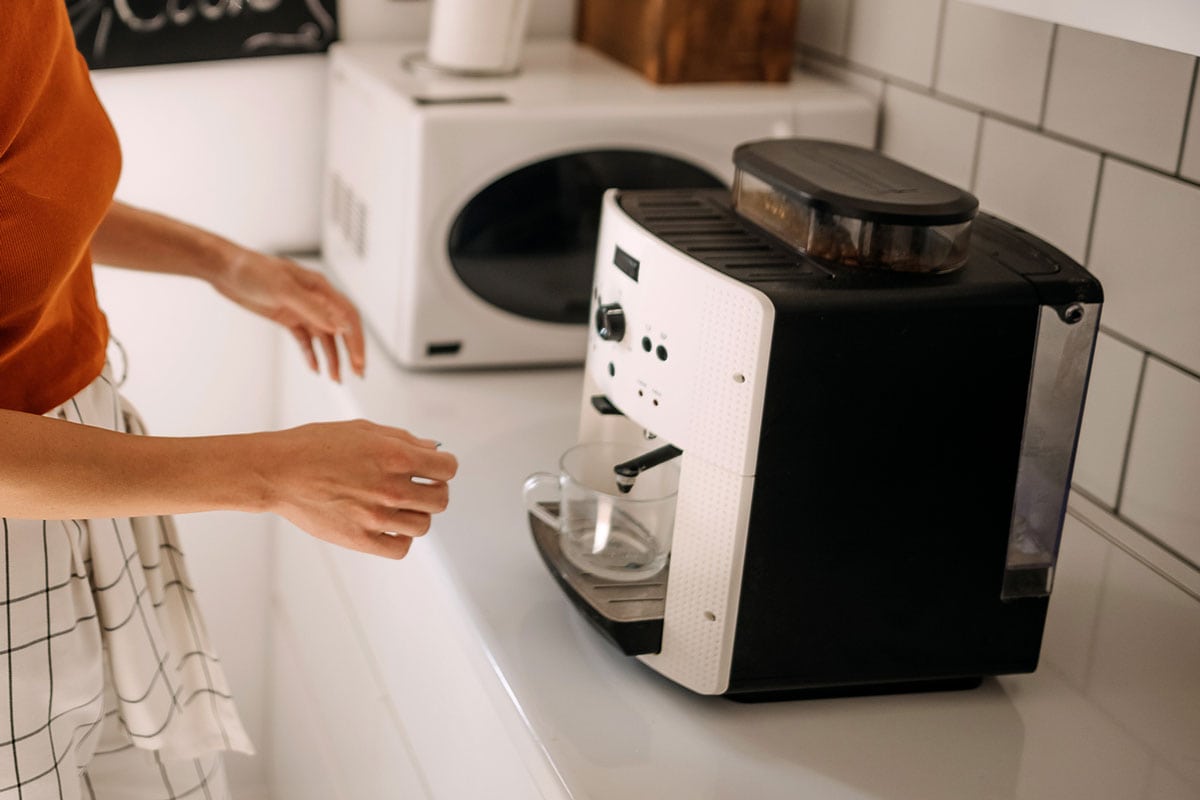
Can A Dirty Coffee Maker Make You Sick?
There is another important incentive to keeping your coffee machine clean other than ridding it of limescale buildup. Your health can become adversely impacted by a dirty coffee maker, giving you symptoms that range from mild to serious.
Coffee mold can cause headaches, nausea, cold-like symptoms, and more for those who have mold allergies. In more severe cases, this mold can cause flu-like symptoms.
For best results, it's advised to regularly clean and sanitizes your coffee maker. This will keep any mold and yeast from building up to harmful levels as well as keep limescale from clogging your machine.
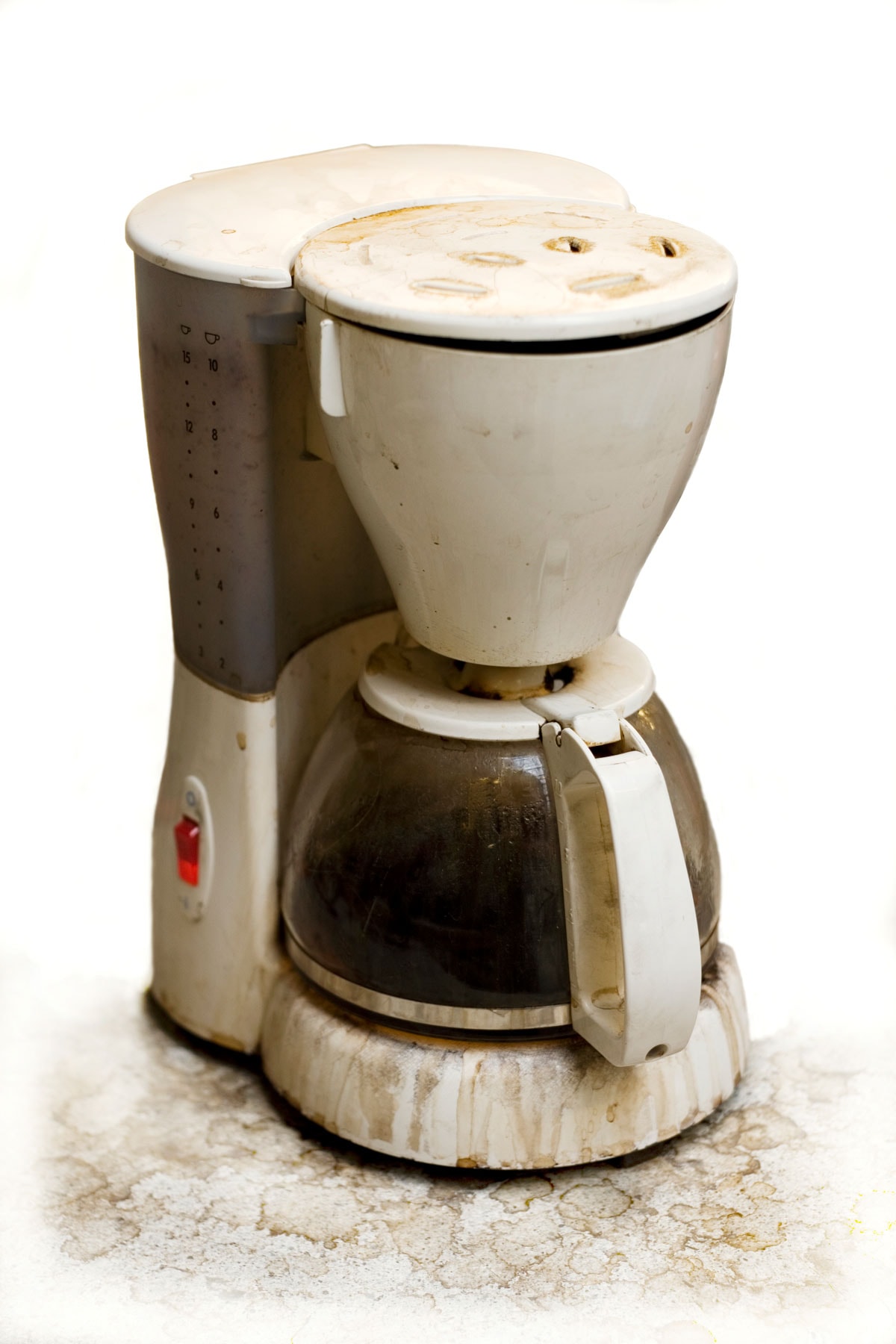
How Often Should I Clean My Coffee Maker?
Coffee makers should be thoroughly cleaned once a month with regular use. But there are a few things that should be done much more frequently.
The coffee pot itself, or the carafe, should be rinsed and cleaned after each use. This will keep the coffee that is kept in it throughout the day fresh and lower in acidity.
The basket that holds the coffee filter and the grounds should be emptied after each use as well. If you let a filter and old coffee grounds sit for too long, they will begin to mold. This will create a need for you to deep clean your coffee maker.
Can I Drink Three-Day-Old Coffee?
Day-old coffee should be fine to reheat and drink. As long as there aren't any dairy products in the brew that could have spoiled at room temperature, there's no harm in microwaving your leftover cup to enjoy later in the day.
After a day or so, it's probably best to discard your leftover coffee. The oxygen and hydrogen in the coffee will have grown to the point that it won't taste as good, and you run the risk of other contaminants invading your drink.
Final Thoughts

A coffee maker is susceptible to limescale buildup just like many other items and appliances in your home. Routine maintenance will keep this limescale at bay and prevent it from clogging up your machine.
Use your coffee maker with care and maintain it properly, and you should be able to enjoy the coffee it makes for a decade or longer.
We hope this post on troubleshooting your coffee maker answered all of your questions. For additional helpful information on coffee makers, we suggest reading the following posts:
Bold Setting On Coffee Maker: What Does That Do?
Coffee Maker Leaking From Bottom – What To Do?
Can You Keep A Coffee Maker On All Day?


